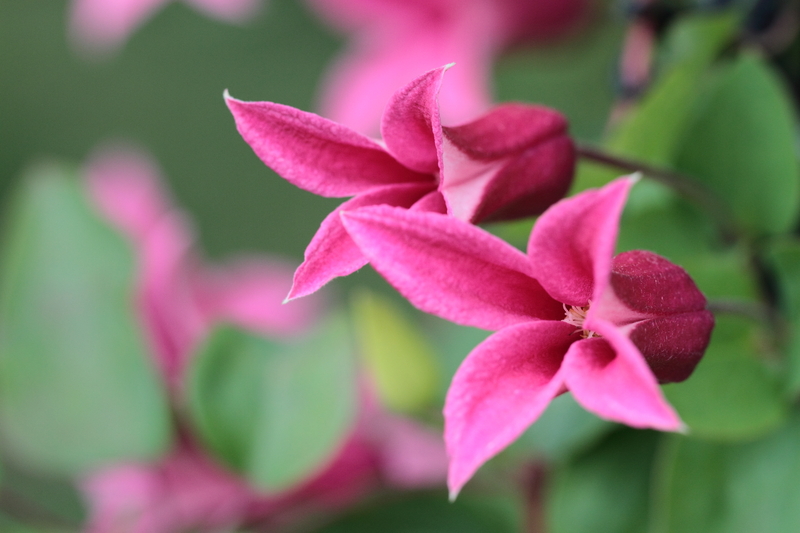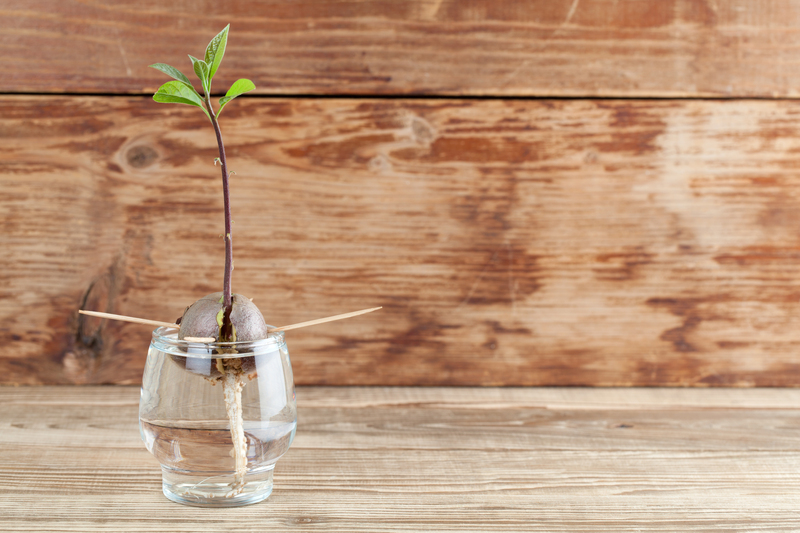The ins and outs of thriving plants in containers
Posted on 14/08/2025
The Ins and Outs of Thriving Plants in Containers
Growing plants in containers has evolved from a simple gardening trend to a highly popular and practical solution for both indoor and outdoor spaces. Whether you lack a yard or simply want to add greenery to your balcony, deck, or windowsills, mastering the art of container plant care is essential for gardeners of all levels. This article will serve as your ultimate guide to cultivating healthy and lush container plants, helping you understand everything you need to know about container gardening for success all year round.

Why Choose Container Gardening?
Container gardening offers incredible versatility and accessibility for modern plant lovers. Here are several compelling reasons to grow your plants in containers:
- Space-saving: Perfect for small patios, porches, or apartments.
- Mobility: Move your container plants to follow the sun or shield them from bad weather.
- Pest control: Elevate or separate plants to minimize the risk of pests and diseases.
- Customization: Create decorative arrangements and experiment with different plant varieties.
- Control over soil & drainage: Adjust the soil mix specifically for each plant's needs.
Selecting the Best Containers for Healthy Plants
Not all plant containers are created equal. When selecting pots or planters, it's important to consider several key factors to ensure your container plants thrive:
Material Matters
- Terracotta and Clay: These are porous, allowing air and moisture exchange, but they dry out quickly. Ideal for succulents and Mediterranean herbs.
- Plastic: Lightweight, affordable, and slow to dry out - ideal for moisture-loving plants.
- Wood: Offers insulation, blending well with outdoor decor, but may rot over time if not lined properly.
- Metal: Decorative and durable but can heat up in the sun, potentially harming roots.
- Ceramic: Glazed ceramics retain moisture and are beautiful but can be heavy and breakable.
Size Makes a Difference
Picking the right container size is crucial for root development and general plant health. Too small, and plants become root-bound, stunting growth. Too large, and excess soil can stay wet, leading to root rot.
- For herbs and annuals: 6-8 inches in diameter is usually adequate.
- For vegetables and larger ornamentals: At least 12-18 inches across and deep.
- Trees and shrubs in containers: Choose deeply sized planters with good stability.
Drainage is Key for Healthy Roots
Always choose containers with drainage holes. Standing water suffocates roots and encourages disease. For decorative pots without holes, place your plant in a nursery pot with holes, then set it inside the decorative container (use a saucer to catch runoff).
The Ideal Potting Mix for Container Plants
Unlike garden soil, which is too dense, container plants require a specialized potting mix to ensure optimum aeration and moisture retention. Here's how to select or make the best soil for your potted plants.
What to Look For in Potting Soil
- Lightweight and fluffy texture for root growth and airflow.
- Moisture retention ingredients like coconut coir, peat moss, or vermiculite.
- Excellent drainage, often provided by perlite or coarse sand.
- Added nutrients such as compost, worm castings, or slow-release fertilizers.
Never use garden soil in containers: it compacts easily, impedes drainage, and may harbor pests and diseases.
Customizing Your Mix
Each plant species thrives in different soil conditions. For instance:
- Cacti and succulents: Prefer sandy, quick-draining mixes.
- Acid-loving plants: Require mixes with peat moss for lower pH.
- Vegetables: Benefit from rich, organic matter for continuous feeding.
Choosing the Right Plants for Containers
While almost any plant can be grown in a pot, some are particularly well suited for container gardening success. Consider not only their mature size but also their growth habits and root structures.
Best Plants to Grow in Containers
- Herbs: Basil, thyme, mint, parsley, chives, and rosemary flourish in pots on sunny windowsills or patios.
- Annual Flowers: Petunias, marigolds, impatiens, and geraniums provide vibrant, seasonal color.
- Vegetables: Tomatoes, peppers, lettuces, spinach, radishes, and bush variety beans or peas.
- Small fruiting shrubs: Blueberries, strawberries, or dwarf fruit trees when provided with adequate space.
- Ornamental grasses and small evergreens: Add structure and greenery year-round.
- Houseplants: Pothos, snake plant, peace lily, spider plant, and more will thrive indoors in containers.
How to Plant in Containers
Follow these simple steps to ensure your potted plants get the best possible start:
- Clean your container and ensure proper drainage holes.
- Add a layer of gravel or broken potsherds at the bottom to enhance drainage (optional but helpful for large pots).
- Fill halfway with the chosen potting medium.
- Gently remove your plant from its nursery pot, tease out tangled roots, and place it in the container so that the root ball is 1-2 inches below the rim.
- Fill around the root ball with additional potting mix, firming it gently as you go to remove air pockets.
- Water thoroughly until liquid runs out the bottom, settling the soil.
- Add mulch or decorative stones on top to retain moisture and enhance appearance (if desired).
The Science of Watering Container Plants
Watering is the most critical aspect of successful container gardening, and it's where many beginners stumble.
Understanding Plant Needs
Unlike in the open ground, soil in pots dries out much more quickly. Factors such as container size, plant type, temperature, and humidity all influence your watering schedule.
- Check soil moisture regularly: Stick your finger in the soil up to the second knuckle; water if it feels dry 1-2 inches down.
- Water slowly: Give enough time for the water to soak all the way through the root zone and drain from the bottom.
- Morning watering: Is usually best to prevent fungal diseases and allow excess moisture to evaporate.
Signs of Overwatering and Underwatering
- Overwatered plants: Yellowing leaves, root rot, and soggy soil.
- Underwatered plants: Wilting, crispy leaves, and dry, compacted soil.
Be diligent and adjust your watering routine according to season and weather changes.
Fertilizing for Thriving Container Plants
Plants in containers use up their nutrient supply more quickly than those growing in the ground, making regular fertilization crucial.
How and When to Fertilize
- Use slow-release fertilizer: Mix granular slow-release fertilizer into the potting mix at planting time for a steady nutrient boost over several months.
- Liquid feeding: Apply diluted liquid fertilizer (such as fish emulsion or balanced synthetic blends) every two to four weeks during the main growing season.
- Top dress organics: Every few months, scratch in compost or worm castings for added nutrition.
Watch for Nutrient Deficiencies
Yellowing leaves, weak growth, and poor flowering may signal your plant's nutrient needs aren't being met. Adjust both the type and frequency of feeding as needed for optimal container plant health.
Sunlight and Placement - Setting Your Plants Up for Success
Proper sunlight is vital for container-grown plants. Observe how many hours of sunlight your intended area receives:
- Full sun: At least 6 hours of direct sunlight. Good for vegetables, most flowers, cacti, and succulents.
- Partial shade: 3-6 hours of indirect or filtered sunlight. Ideal for many herbs and some leafy greens.
- Shade: Less than 3 hours of direct sun. Suitable for ferns, hostas, and shade-happy houseplants.
If outdoors, place containers where they are protected from harsh wind and heavy rainfall, which can damage delicate stems and wash out soil and nutrients.
Managing Pests and Diseases in Containers
One of the biggest advantages of container plant care is the ability to manage and prevent pests and diseases more easily.
- Inspect regularly: Check under leaves and around soil for common pests like aphids, spider mites, and fungus gnats.
- Maintain hygiene: Remove dead leaves and spent flowers from pots promptly to avoid fungal growth.
- Rotate if possible: If you see issues, move the container to a different location to slow the spread of pests or diseases.
- Use safe treatments: Neem oil, insecticidal soap, or natural predators can help manage outbreaks.
Repotting and Refreshing Your Containers
Over time, even the best-cared-for container plants outgrow their homes. Repotting is a regular part of container gardening for healthy, thriving plants.
- Signs your plant needs repotting: Roots growing out of drainage holes, water running straight through the pot, or plants looking crowded and stunted.
- How-to: Move up one pot size, use fresh potting mix, trim circling roots, and water thoroughly after repotting.
- Refresh soil for perennials: Scrape out the top two inches of old mix each spring and replace with fresh potting soil and new fertilizer.
Seasonal Container Plant Care Tips
Spring and Summer
- Fertilize regularly to support active growth.
- Watch for rapid drying and adjust watering up during heatwaves.
- Pinch back leggy or sprawling plants to encourage bushiness.
Autumn
- Move tender plants indoors before the first frost.
- Reduce watering as days shorten and temperatures drop.
- Cut back on feeding--growth slows down.
Winter
- Protect outdoor pots from freezing by moving closer to house walls or wrapping with bubble wrap.
- Water sparingly; let topsoil dry completely between waterings.
- For evergreens in containers, check for soil moisture during dry spells.

Design Tips: Arranging and Combining Multiple Container Plants
Mixed container plantings can turn any space into a living art piece. Use these proven strategies:
- Thriller, filler, spiller: Combine a tall centerpiece (thriller), mounding plants (filler), and cascading varieties (spiller) in one big container for dramatic effect.
- Cohesive color palette: Match flower and foliage colors to create a unified, intentional look.
- Edibles and ornamentals: Mix lettuces, herbs, and nasturtiums with flowers and foliage for both beauty and productivity.
- Vary heights and textures: Play with upright, compact, and trailing plants to add depth and interest.
The Final Word: The Art and Joy of Thriving Container Plants
Container gardening is a fulfilling and accessible way to green any space--indoors or out. By choosing appropriate containers, healthy soil, suitable plants, proper placement, regular watering, and good ongoing care, you can grow truly thriving potted plants that enhance your life and environment.
Ready to try your hand at container gardening? Experiment with different plant combinations, container types, and arrangements. Most importantly, enjoy the process of watching your container plants flourish!
For more container plant care tips, plant selection ideas, and troubleshooting advice, bookmark this article and check back often for updates as you cultivate your own green oasis.

